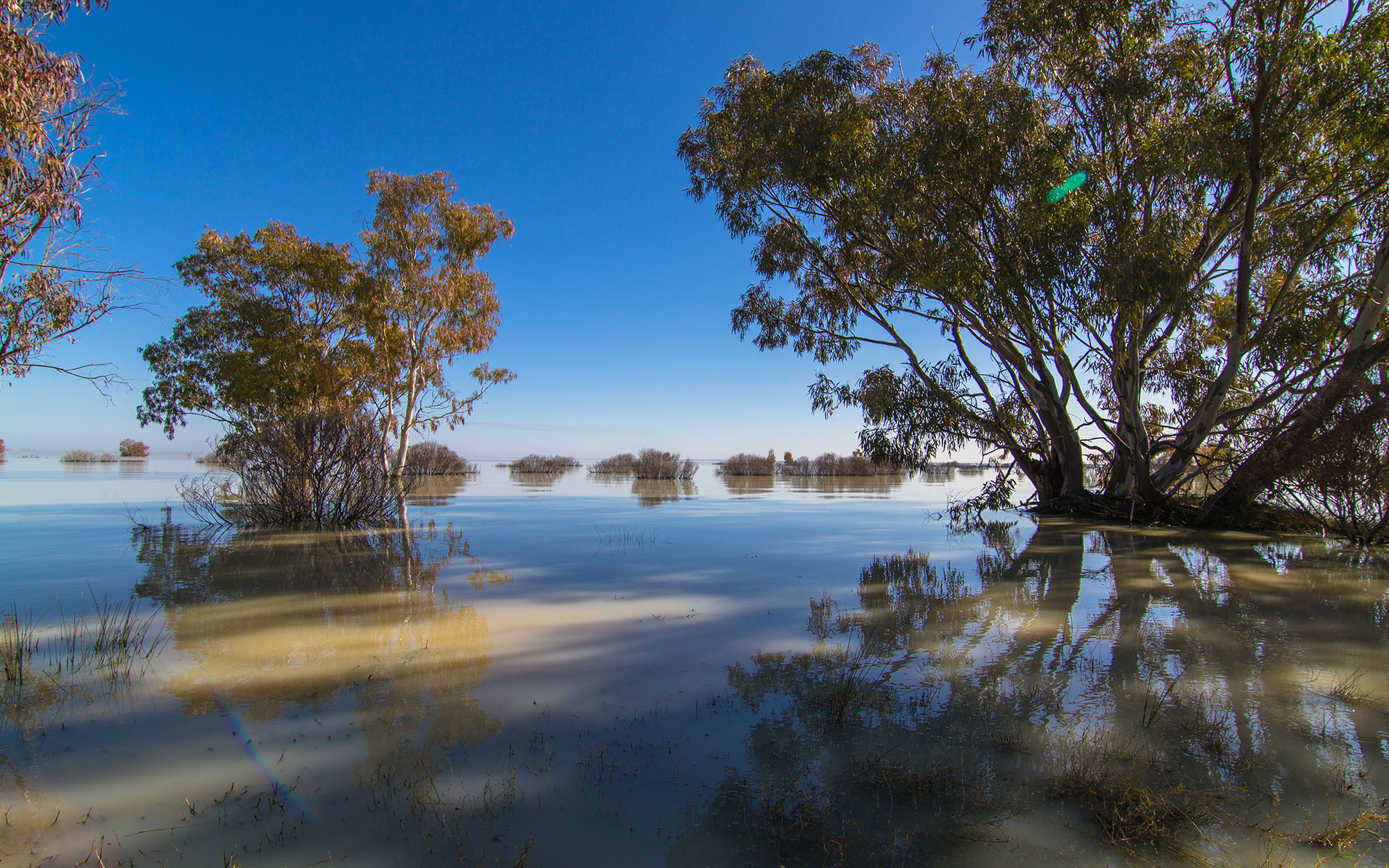About the Lower Darling
The Lower Darling River is in the semi-arid environment of south-western NSW between Menindee and Wentworth. The term 'Lower Darling' usually refers to the part of the Darling River regulated by releases from the Menindee Lakes Scheme. Inflows to the Menindee Lakes come from the Barwon-Darling River and its tributaries.
The Lower Darling catchment area is around 35,000 square kilometres. The general topography of the catchment is flat with elevations less than 100 metres across most of the floodplain.
Rivers and tributaries
The Darling River flows for 530 kilometres from the Menindee Lakes to its junction with the Murray River.
The Menindee Lakes are a major feature of the catchment. The lakes were originally a series of shallow, natural ephemeral lakes, that would fill during wet periods and dry up during droughts. They were modified in the 1960s for use as water storages, and still have significant environmental and recreational value.
The Great Darling Anabranch is an ancestral channel of the Darling River. It has a natural offtake from the Darling River, but can also receive flows released directly from Lake Cawndilla, one of the Menindee Lakes. Several large overflow lakes connected to the anabranch are important waterbird habitat.
Water storages
The Menindee Lakes Scheme was completed in the 1960s and stores 1,730,000 megalitres in its 4 main lakes – Menindee, Cawndilla, Pamamaroo and Wetherell.
Water from the lakes is used to supply Broken Hill, replenish the Lower Darling environment, and supplement water supplies to users in NSW, Victoria and South Australia.
Towns
The township of Menindee is in the north of the catchment, adjacent to the Menindee Lakes. Midway along the Lower Darling River is the small village of Pooncarie. Wentworth is the largest town, located at the junction of the Murray and Darling rivers.
Water users
Key water uses include irrigated agriculture, town water supply, and livestock grazing. The town water supply is primarily to Broken Hill.
Water is also supplied annually through a pipeline for stock and domestic use along the Great Darling Anabranch.
Kinchega National Park near Menindee covers over 440 square kilometres, including 62 kilometres of river frontage. It is one of only 2 large conservation areas along the Darling River and protects substantial areas of river red gums, and rare acacia and bluebush communities. The park also has significant Aboriginal and European heritage values.
The Menindee Lakes are important waterbird habitat with over 30 species of waterbirds recorded on the main lakes, including threatened species such as freckled duck and migratory waders. The lakes are listed in the Directory of Important Wetlands in Australia.
The Darling Anabranch Lakes also provide extensive areas of waterbird habitat. Listed in the Directory of Important Wetlands in Australia, the lakes have a combined area of 43,000 hectares.
Water from the Menindee Lakes is shared between NSW, Victoria and South Australia as part of the Murray-Darling Basin Plan, administered by the Murray-Darling Basin Authority. Sharing water resources fairly between the states, particularly during drought, to supply consumptive and environmental needs, is a key water management issue.
The Lower Darling was subject to severe drought between 2001 and 2010, and again between 2017 and 2019. River flows reached record lows, with extraordinary water sharing arrangements put in place to secure water supplies for towns and critical water-dependent industries. Securing water for critical human needs while trying to protect and maintain riverine health is a key challenge.
Large volumes of water are lost each year through evaporation from the Menindee Lakes system. Reducing evaporation would increase the amount of water available for Broken Hill, downstream users and the environment.
